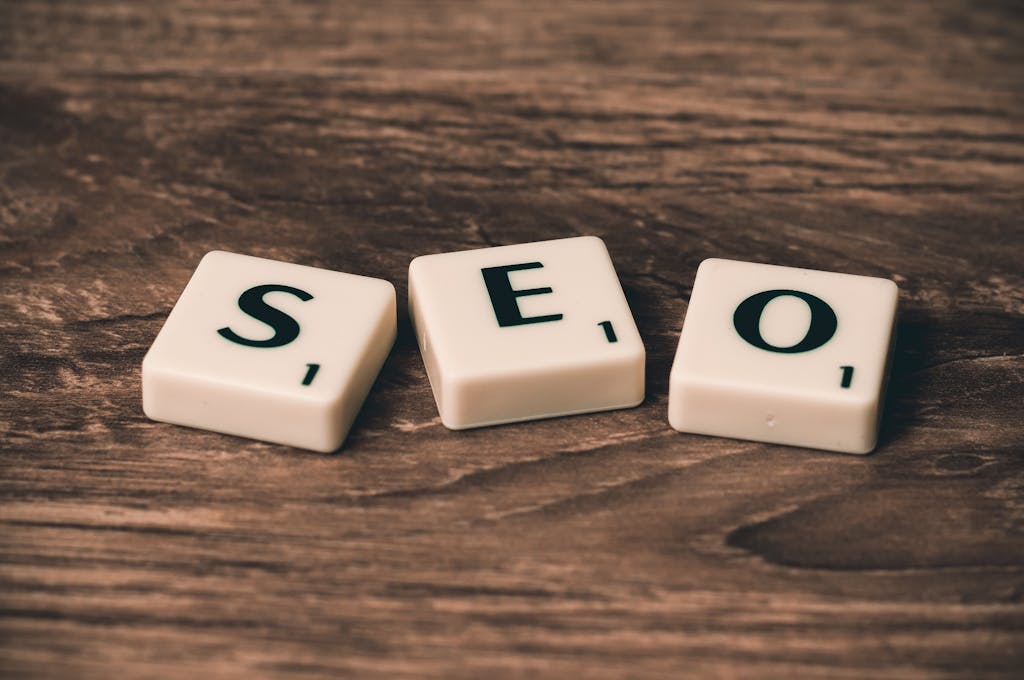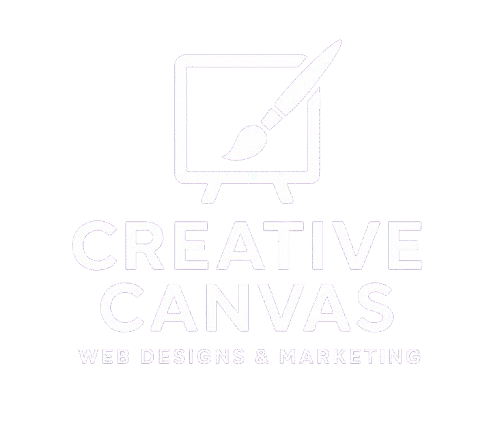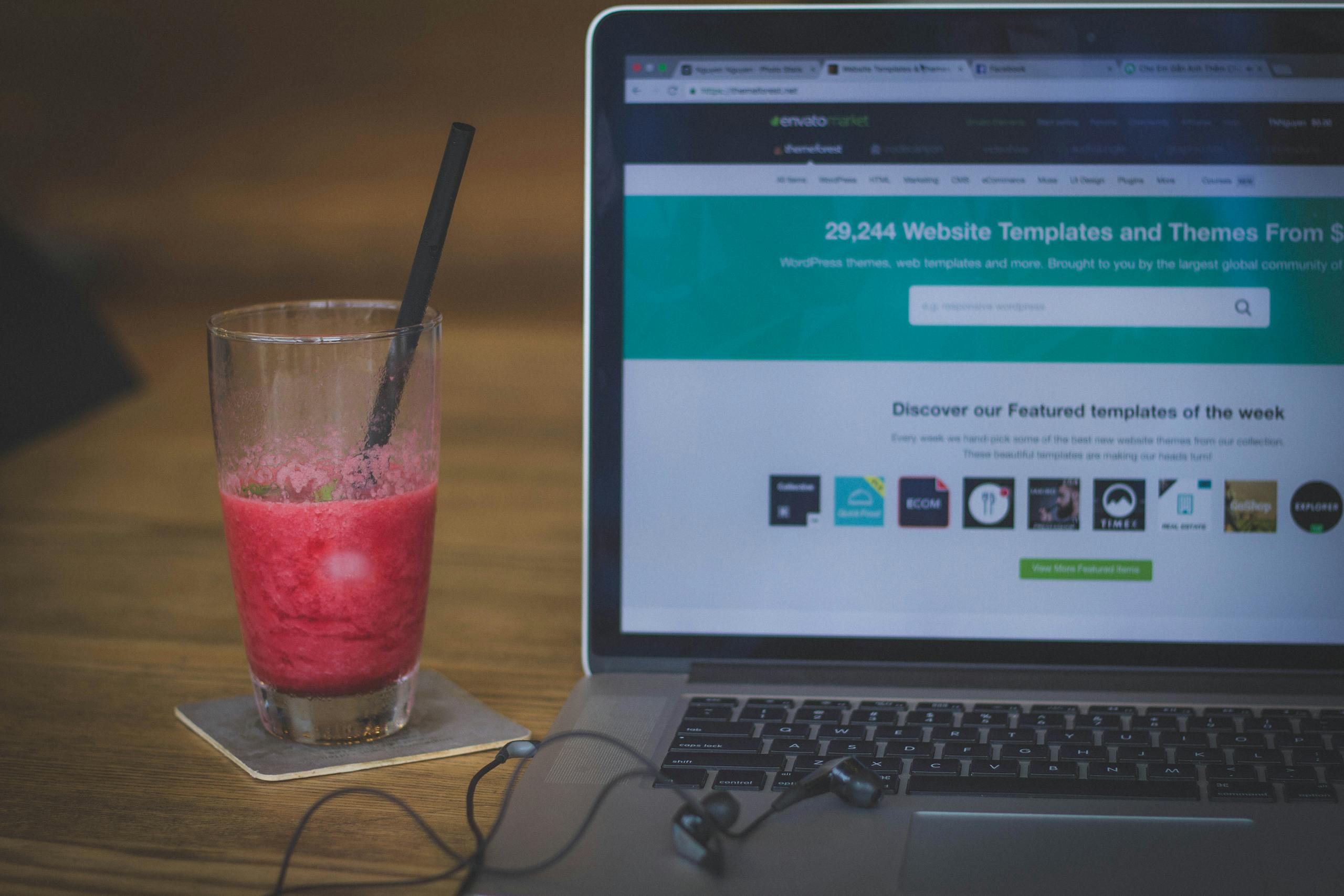Google Business Profile vs. Website: Which Matters More for Local Businesses?
Recently, one of my clients—a hardworking landscaper here in the Mansfield area—came to me with a frustration I hear all the time. “Nobody’s visiting my website,” he said, “but customers keep telling me they found me on Google.” If you’re a local business owner, this probably sounds familiar. You’ve invested in a professional website, yet it feels like it’s sitting there collecting digital dust while your phone keeps ringing anyway.
So what’s really going on here? The answer lies in understanding the difference between Google Business Profile vs website—and more importantly, knowing which one deserves most of your attention and limited marketing budget. In this guide, we’ll break down both tools, explore how customers actually find local businesses in 2025, and help you make smart decisions about where to invest your time and money. At Creative Canvas Design & Marketing, we help local businesses navigate these exact decisions every day.

Understanding the Two Tools: What’s the Difference?
Before we can compare them, let’s make sure we’re clear on what each tool actually does for your business.
What is a Google Business Profile?
Your Google Business Profile (formerly known as Google My Business) is a free listing that appears when people search for businesses like yours on Google Search and Google Maps. When someone searches “landscaper near me” or “plumber in Mansfield,” Google shows a map with three businesses at the top—that’s the Local Pack, and those spots are powered by Google Business Profiles.
Furthermore, your profile includes essential information like your phone number, address, hours, photos, reviews, and services. Best of all, it’s completely free to claim and manage. Therefore, it’s accessible to every business regardless of budget.
What is a Business Website?
In contrast, your website is digital property that you own and control. It’s where you can provide detailed information about your services, showcase your work, share customer testimonials, publish blog posts (like this one), and establish your brand identity. While a Google Business Profile has limitations on what you can display, your website gives you unlimited space to tell your story.
Additionally, a website requires either ongoing maintenance costs (typically $40-150 per month if professionally managed) or your own time if you’re using a DIY platform like Wix or Squarespace.
Why the Confusion?
The confusion happens because when customers say “I found you on Google,” they could mean several different things. According to Search Engine Journal, they might have found your Google Business Profile in the map results, clicked through to your website from a regular search result, or seen your paid Google ad. Consequently, many business owners assume their website is driving all that traffic when, in reality, most local customers never actually visit the site at all.

The Surprising Truth About How Customers Find Local Businesses
Here’s what might surprise you: according to Google’s own research, approximately 46% of all Google searches have local intent. Moreover, “near me” searches have increased by over 900% in recent years. Clearly, people are looking for businesses in their immediate area more than ever before.
However, here’s the crucial part: most of these searchers never visit your website. Instead, they find your business in the Google Maps results, read your reviews, look at your photos, check your hours, and then call you directly—all without ever clicking through to your website.
Think about your own behavior for a moment. When you need a plumber at 10 PM because a pipe burst, do you carefully browse through multiple plumber websites reading about their company history? Of course not. You search “emergency plumber near me,” look at the map results, check which ones have good reviews and are open, and call the first one that looks reliable.
Similarly, your customers are doing the exact same thing when they need your services.
Real-World Example: The Landscaper
Let me share that landscaper’s story in more detail. He was paying for website hosting and basic maintenance, and understandably, he wanted to see results. When I checked his website analytics, the numbers confirmed what he suspected—very little traffic. Nevertheless, his business was getting steady calls from new customers.
After investigating further, we discovered that his Google Business Profile was doing all the heavy lifting. His listing appeared in the Local Pack for searches like “landscaping Mansfield TX” and “lawn care near me.” Customers were reading his 4.8-star reviews, looking at photos of his completed projects, and calling him directly from the map listing. Indeed, his website existed primarily as a credibility check—a place for potential customers to confirm he was legitimate if they decided to look him up.
This pattern isn’t unique to landscaping. Whether you’re a contractor, restaurant, salon, plumber, electrician, or any other local service business, the majority of your customers likely find you through Google Maps, not through traditional website searches.

Google Business Profile: Your Secret Weapon
Given what we now know about customer behavior, it becomes clear that your Google Business Profile deserves serious attention. Let’s explore why it’s so powerful and how to maximize its potential.
Why GBP Matters More for Most Local Businesses
First and foremost, your Google Business Profile is free. Unlike websites that require hosting fees, maintenance costs, or your valuable time to manage a DIY platform, GBP costs you nothing except the time to set it up and maintain it.
Second, it appears exactly where customers are searching. When someone needs your service right now, they’re not thinking about browsing websites—they’re looking at that map with three businesses at the top. If you’re one of those three businesses, your phone will ring. If you’re not, you’re missing out.
Third, it builds trust instantly through reviews. Social proof is incredibly powerful, and those star ratings visible in search results can make or break a customer’s decision. In fact, according to BrightLocal’s research, 87% of consumers read online reviews for local businesses, and reviews are one of the top ranking factors for local search.
What Shows Up in Your Profile
Your Google Business Profile includes several critical elements that influence whether customers choose you:
Business Information: Your name, address, phone number, website link, and hours of operation appear prominently. Accuracy here is essential because nothing frustrates customers more than showing up to a business that’s closed despite Google saying it’s open.
Reviews and Ratings: Your overall star rating and individual customer reviews display for everyone to see. Additionally, how you respond to reviews (both positive and negative) demonstrates your professionalism and customer service approach.
Photos and Videos: Visual content showcases your work, your team, and your location. Businesses with photos receive 42% more requests for directions and 35% more clicks through to their websites than businesses without photos.
Posts and Updates: Similar to social media, you can publish updates about special offers, new services, events, or company news. These posts appear in your profile and can help you stand out from competitors.
Questions and Answers: Customers can ask questions publicly, and you can provide answers. Proactively adding common questions and answers helps address concerns before they become obstacles.
Services and Products: You can list specific services you offer, which helps Google understand what you do and match you with relevant searches.
How to Optimize Your Google Business Profile
Optimizing your profile isn’t complicated, but it does require consistent effort. Here’s what you need to do:
Claim and Verify Your Listing: First things first—if you haven’t already, claim your business on Google and complete the verification process. This usually involves receiving a postcard with a verification code at your business address.
Complete Every Section Thoroughly: Don’t leave any fields blank. The more information you provide, the more Google understands your business, and the better your chances of appearing in relevant searches. Include your business description, attributes (like “wheelchair accessible” or “free Wi-Fi”), and service areas.
Choose the Right Categories: Select the most specific primary category that describes your business, then add relevant secondary categories. For example, a landscaper might choose “Landscaper” as primary and add “Lawn Care Service,” “Tree Service,” and “Irrigation Equipment Supplier” as secondary categories.
Post Weekly Updates: Consistency matters. Aim to post at least once per week with updates about your work, special offers, tips, or behind-the-scenes content. Posts stay visible for seven days, so regular posting keeps your profile fresh and engaging.
Respond to All Reviews: Always respond to reviews—both positive and negative. Thank customers for positive reviews and address concerns professionally in negative reviews. This demonstrates that you care about customer feedback and are actively managing your business.
Add High-Quality Photos Regularly: Upload photos of your work, your team, your location, and anything else relevant to your business. Aim to add new photos at least monthly. Make sure images are well-lit, in focus, and showcase your best work.
Keep Your Information Updated: If your hours change for holidays, update them. If you add a new service, list it. If you change your phone number, update it immediately. Outdated information frustrates customers and hurts your credibility.
Common Mistakes to Avoid
Even though managing a Google Business Profile is straightforward, many businesses make critical errors:
Ignoring Reviews: Failing to respond to reviews—especially negative ones—signals that you don’t care about customer feedback. Even worse, ignoring questions in the Q&A section leaves potential customers without answers they need.
Using Low-Quality Photos: Blurry, dark, or unprofessional photos hurt more than they help. If you’re going to add photos (and you should), make sure they represent your business well.
Inconsistent NAP Information: NAP stands for Name, Address, and Phone number. These must be consistent across your Google Business Profile, website, and all other online directories. Inconsistencies confuse Google and can hurt your rankings.
Neglecting Posts: Creating a profile and then never updating it is a wasted opportunity. Regular posts signal to Google that your business is active and engaged.
Choosing the Wrong Category: Selecting a category that doesn’t accurately describe your business can result in showing up for irrelevant searches while missing searches from your actual target customers.

When You DO Need a Website
Now, before you think I’m suggesting you don’t need a website at all, let me be clear: websites absolutely have their place. However, their role for local businesses is often different from what you might expect.
Situations Where a Website is Essential
Your business definitely needs a website if any of these apply:
You Offer Complex Services: If your services require detailed explanation, customization options, or educational content to help customers understand what you do, a website provides the space to communicate this information effectively.
You Want to Rank for Broader Search Terms: While Google Business Profile excels at local searches (“plumber near me”), a well-optimized website can rank for broader informational searches like “how to fix a leaky faucet” or “best landscaping ideas for Texas.” This helps you reach customers earlier in their decision-making process.
You Need E-commerce Functionality: If you sell products online, you obviously need a website with e-commerce capabilities. Your Google Business Profile can showcase products, but it can’t process transactions.
You Want to Capture Leads: Websites allow you to offer valuable resources (like free guides or estimates) in exchange for email addresses, building a list of potential customers you can market to over time.
You Provide B2B Services: Business-to-business customers often conduct more research before making decisions. They’re more likely to visit your website to learn about your experience, credentials, and case studies before reaching out.
You Want Professional Credibility: Even if most customers find you through Google Maps, having a professional website adds legitimacy. When someone looks up your business name specifically, you want them to find a polished website that reinforces their decision to work with you.
Your Website as Your Digital Home Base
Think of your Google Business Profile as your storefront window and your website as the entire store. The storefront attracts attention and draws people in, while the store provides the full experience and detailed information.
Moreover, your website gives you complete control. Google can change how Business Profiles work, but your website is yours. You control the design, content, functionality, and user experience. This ownership matters for long-term brand building.
Additionally, your website supports your other marketing efforts. You can send email newsletters to your website, share blog posts on social media, and create landing pages for specific campaigns. Your Google Business Profile supports these efforts but can’t replace them entirely.
The Smart Strategy: Both, But Prioritized Right
The best approach for most local businesses isn’t choosing between a Google Business Profile and a website—it’s understanding how to use both strategically while prioritizing your time and budget appropriately.
The Winning Combination
Here’s the strategy that works for most local service businesses:
Start with Google Business Profile: Before you invest significant money in a website or SEO services, claim and fully optimize your Google Business Profile. This gives you immediate visibility where your customers are already searching, costs you nothing, and can start generating leads within days.
Add a Simple, Professional Website: Once your profile is optimized, invest in a basic, professional website that covers the essentials: who you are, what you do, your service area, how to contact you, and proof of your quality work (testimonials, photos, case studies). This doesn’t need to be elaborate—simple and functional beats fancy and confusing every time. If you need help getting started, check out our website services designed specifically for local businesses.
Maintain Both Consistently: Don’t neglect your Google Business Profile once you have a website. Continue posting updates, responding to reviews, and adding photos. Meanwhile, keep your website updated with accurate information and occasional fresh content.
Invest in Advanced SEO Only if Needed: For many local businesses, a well-optimized Google Business Profile and a simple website are sufficient. Save advanced SEO services (which typically cost $150-500+ per month) for situations where you’re competing in highly saturated markets or need to reach customers through educational content and broader search terms.
Budget Allocation Reality Check
Let’s talk real numbers. If you’re a small local business, here’s a sensible budget allocation:
Google Business Profile Management: $0 in direct costs, but plan to invest 15-30 minutes per week of your time managing it. If you absolutely can’t do this yourself, some marketing agencies offer Google Business Profile management for $50-150 per month.
Basic Website: Expect to pay $40-99 per month for professional hosting and maintenance if you want someone else to handle technical updates, security, and backups. Alternatively, you can use a DIY platform for $15-40 per month, but remember you’ll invest your own time managing it.
Website SEO Services: Only consider investing in ongoing SEO ($150-500+ per month) if you’re in a competitive market, want to rank for broader terms beyond local searches, or have specific business goals that require increased website traffic. For most local service businesses, this isn’t necessary initially.
Therefore, a realistic starting budget might be $0-50 per month (if you manage everything yourself) or $40-150 per month (if you want professional website maintenance and possibly Google Business Profile help). This is far more affordable than many businesses expect, and it’s often sufficient to generate consistent leads.
For Most Local Businesses: GBP Comes First
If you’re a contractor, landscaper, plumber, electrician, house cleaner, hair salon, restaurant, or any other business that primarily serves local customers who need your services relatively quickly, your Google Business Profile will generate more leads than your website in most cases.
Consequently, if you had to choose only one place to invest your limited time and energy, invest it in your Google Business Profile. Get those reviews, post those updates, add those photos, and keep your information current. Your phone will ring.
However, once your profile is working well, add that website for credibility and to catch the smaller percentage of customers who do their research online before calling. Together, these tools create a strong online presence that captures customers at different stages of their decision-making process.
Real Talk: What I Tell My Clients
After years of helping local businesses improve their online presence, here’s the honest advice I give:
If you can only do one thing right now—whether because of budget constraints, time limitations, or simply feeling overwhelmed by all the marketing advice out there—focus on your Google Business Profile. Claim it, complete it thoroughly, get some good reviews, add quality photos of your work, and post updates regularly. This will generate more leads for most local businesses than any other single action you can take.
Your website serves an important but supporting role. It’s there for credibility when someone wants to learn more about you. It’s there to provide detailed information that doesn’t fit in your Google Business Profile. It’s there as your owned digital property that you control completely. Nevertheless, for businesses like landscapers, contractors, and other local services, the website typically isn’t the primary lead generation tool—your Google Business Profile is.
Furthermore, I’ve seen too many local business owners invest thousands of dollars in elaborate websites with advanced SEO services when their Google Business Profile sits there barely optimized, generating little visibility. That’s backwards. Get the fundamentals right first, then invest in advanced strategies if and when they make sense for your specific business goals.
Take Action Today
Now that you understand the relationship between your Google Business Profile and your website, here are your next steps:
If you haven’t already, claim your Google Business Profile today. It takes about 15 minutes to set up initially, and verification typically arrives within a week. This is free, straightforward, and potentially the highest ROI marketing action you’ll take this year.
Commit to spending 15 minutes per week managing your profile. Schedule it on your calendar like any other business task. Add photos, post updates, respond to reviews, and answer questions. This small time investment can dramatically increase your visibility in local searches.
Ensure you have a simple, professional website that covers the basics. If you already have a website, great—make sure it’s mobile-friendly, loads quickly, and has accurate contact information. If you don’t have one yet, keep it simple. You don’t need fancy features initially; you need clear information about what you do and how customers can reach you.
Track which source generates more leads for your business. Pay attention to where your calls and inquiries come from. Ask new customers, “How did you find us?” This information will guide where you invest your time and money going forward.

Need Help?
Managing your online presence doesn’t have to be overwhelming. At Creative Canvas Design & Marketing, we help local businesses throughout the Mansfield and DFW area maintain professional websites starting at just $99 per month—including hosting, security updates, backups, and technical support. Learn more about our approach to helping small businesses succeed online.
Moreover, I’m always happy to provide free guidance on optimizing your Google Business Profile. Whether you need someone to handle your website maintenance so you can focus on running your business, or you just want advice on improving your online visibility, feel free to reach out.
Contact me today:
- Phone: 817-526-9864
- Email: dchambers@creativecanvasdesigns.net
- Website: www.creativecanvasdesigns.net
Remember, the goal isn’t to have the fanciest website or the most elaborate online presence—it’s to make it easy for customers to find you, trust you, and contact you. Start with your Google Business Profile, add a solid website, and watch your phone start ringing with new opportunities.
Daniel Chambers is the CEO of Creative Canvas Design & Marketing, helping local businesses in Mansfield, Texas and the surrounding DFW area build effective online presences that generate real results. With years of experience working with contractors, service providers, and local businesses, Daniel understands what actually works for driving leads—not just what sounds good in theory.



